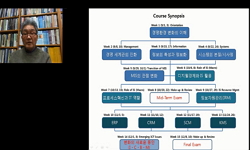This study builds a system of indicators to gauge the growth of the digital economy and employs the entropy weight approach to gauge its state across the 15 Regional Comprehensive Economic Partnership (RCEP) member countries. Then, using a panel datas...
http://chineseinput.net/에서 pinyin(병음)방식으로 중국어를 변환할 수 있습니다.
변환된 중국어를 복사하여 사용하시면 됩니다.
- 中文 을 입력하시려면 zhongwen을 입력하시고 space를누르시면됩니다.
- 北京 을 입력하시려면 beijing을 입력하시고 space를 누르시면 됩니다.

A study on the impact of the digital economy development in RCEP countries on China’s export efficiency: Based on Stochastic Frontier Gravity Model
한글로보기https://www.riss.kr/link?id=A109127090
-
저자
Xiaohui Li (부산대학교) ; 이양기 (부산대학교) ; Yuanyuan Hu (Shanghai Jian Qiao University)
- 발행기관
- 학술지명
- 권호사항
-
발행연도
2024
-
작성언어
English
- 주제어
-
등재정보
KCI등재
-
자료형태
학술저널
-
수록면
187-209(23쪽)
- 제공처
-
0
상세조회 -
0
다운로드
부가정보
다국어 초록 (Multilingual Abstract)
In addition, the author findS that the role of the digital economy in improving the efficiency of China’s export trade became more pronounced during COVID-19 pandemic. This article proposes corresponding policy implications based on these findings.
This study builds a system of indicators to gauge the growth of the digital economy and employs the entropy weight approach to gauge its state across the 15 Regional Comprehensive Economic Partnership (RCEP) member countries. Then, using a panel dataset of China’s export trade to RCEP member countries from 2010 to 2022 as the study sample, an empirical analysis of the impact of the RCEP member countries’ level of digital economy development on China’s export trade is conducted based on the stochastic frontier gravity model. The empirical findings indicate that the main cause of the discrepancy between the actual and potential trade volume of China’s exports to RCEP countries is the degree of development of the digital economy as a trade inefficiency term. The level of growth of its digital economy is positively correlated with China’s exporting status, and it indicates that China’s level of digital growth, which restricts trade efficiency, is a contributing cause to the inefficiency of trade. As importing nations, RCEP members’ levels of digital economy development are negative, which indicates how the expansion of the digital economy among RCEP members has improved China’s export efficiency.
In addition, the author findS that the role of the digital economy in improving the efficiency of China’s export trade became more pronounced during COVID-19 pandemic. This article proposes corresponding policy implications based on these findings.
동일학술지(권/호) 다른 논문
-
다국적기업의 지속가능경영전략과 성과에 가치지향성이 미치는 영향에 대한 실증분석
- 한국무역통상학회
- 이정아
- 2024
- KCI등재
-
이중 중대성 평가와 ESG 경영: 글로벌 철강사 비교연구
- 한국무역통상학회
- 이경창
- 2024
- KCI등재
-
미국통일상법전(UCC) 묵시적 보증과 배제: CISG 제35조와의 관계에 대한 미국 판례를 중심으로
- 한국무역통상학회
- 조현숙
- 2024
- KCI등재
-
호텔종사원의 조직학습이 심리적 임파워먼트, 업무몰입에 미치는 영향에 관한 연구
- 한국무역통상학회
- 최호수
- 2024
- KCI등재




 eArticle
eArticle



